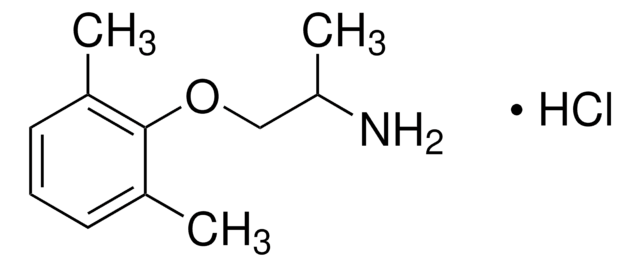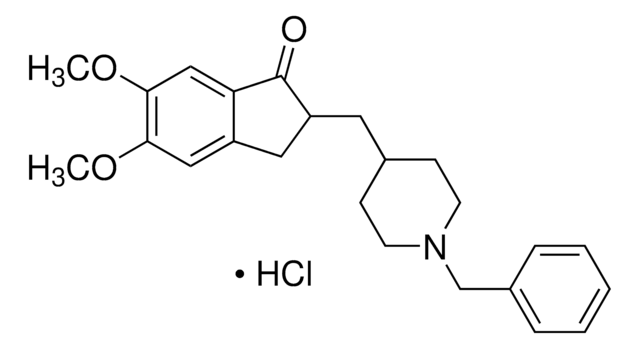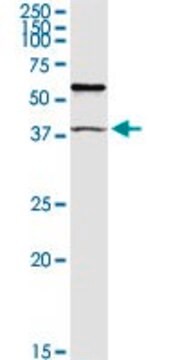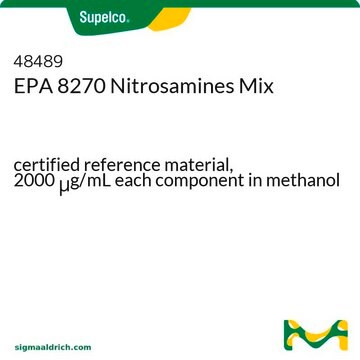Kluczowe dokumenty
SML0007
Cevimeline hydrochloride hemihydrate
≥95% (HPLC, NMR)
Synonim(y):
AF-102B, SNI-2011
About This Item
Polecane produkty
Próba
≥95% (HPLC, NMR)
Formularz
powder
warunki przechowywania
desiccated
kolor
white to tan
rozpuszczalność
H2O: ≥25 mg/mL
inicjator
Daiichi-Sankyo
Warunki transportu
wet ice
temp. przechowywania
−20°C
ciąg SMILES
O.Cl.Cl.C[C@@H]1O[C@@]2(CS1)CN3CC[C@H]2CC3.C[C@@H]4O[C@@]5(CS4)CN6CC[C@H]5CC6
InChI
1S/2C10H17NOS.2ClH.H2O/c2*1-8-12-10(7-13-8)6-11-4-2-9(10)3-5-11;;;/h2*8-9H,2-7H2,1H3;2*1H;1H2/t2*8-,10-;;;/m11.../s1
Klucz InChI
ZSTLCHCDLIUXJE-GMLJRNIPSA-N
Powiązane kategorie
Zastosowanie
Działania biochem./fizjol.
Cechy i korzyści
Hasło ostrzegawcze
Danger
Zwroty wskazujące rodzaj zagrożenia
Zwroty wskazujące środki ostrożności
Klasyfikacja zagrożeń
Acute Tox. 3 Oral
Kod klasy składowania
6.1C - Combustible acute toxic Cat.3 / toxic compounds or compounds which causing chronic effects
Klasa zagrożenia wodnego (WGK)
WGK 3
Temperatura zapłonu (°F)
Not applicable
Temperatura zapłonu (°C)
Not applicable
Wybierz jedną z najnowszych wersji:
Certyfikaty analizy (CoA)
Nie widzisz odpowiedniej wersji?
Jeśli potrzebujesz konkretnej wersji, możesz wyszukać konkretny certyfikat według numeru partii lub serii.
Masz już ten produkt?
Dokumenty związane z niedawno zakupionymi produktami zostały zamieszczone w Bibliotece dokumentów.
Produkty
Muscarinic acetylcholine receptors are G protein-coupled receptors (GPCRs) and mediate acetylcholine actions in the CNS and non-nervous tissues. Learn more about acetylcholine receptors and their role in cell signaling.
Nasz zespół naukowców ma doświadczenie we wszystkich obszarach badań, w tym w naukach przyrodniczych, materiałoznawstwie, syntezie chemicznej, chromatografii, analityce i wielu innych dziedzinach.
Skontaktuj się z zespołem ds. pomocy technicznej








